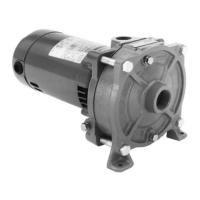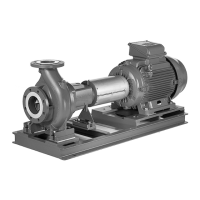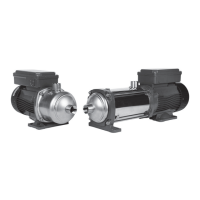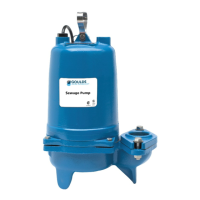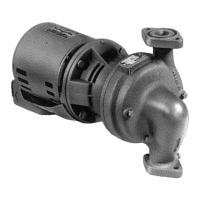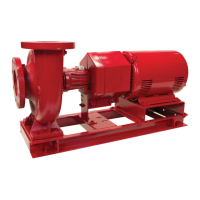9
• Poppet style check valves which
are threaded in from the top of
the discharge head can be easily
removed using a ½" nut driver or
deep socket. The hex hub is visible
and accessible from the top.
• Internal Flomatic™ design plastic
poppet style valves must be
removed from inside which
requires pump disassembly.
• Built-in plastic poppet style
valves with a stem through
the top may be removed from
discharge head by pulling on the
stem with pliers.
3.0 WIRE
SIZING,
SPLICING and
POWER SUPPLY
Always follow the National Electric
Code (N.E.C.), Canadian Electrical
Code, and any state, provincial, or
local codes.
We suggest using only copper wire.
Size wire from the charts found in the
Technical Data section of this manual,
MAID manual, or an N.E.C.
(National Electric Code) code book.
If discrepancies exist the N.E.C. book
takes precedence over a manufac-
turer’s recommendations.
3.1 Splicing Wire to
Motor Leads
When the drop cable must be
spliced or connected to the motor
lead, it is necessary that the splice be
watertight. The splice can be done
with heat shrink kits or waterproof
tape.
A. Heat Shrink Splice Instructions
To use a typical heat shrink kit: strip
½" from the motor wires and drop
cable wires; it is best to stagger the
splices. Place the heat shrink tubes
on the wires. Place the crimps on the
wires and crimp the ends. Slide the
heat shrink tubes over the crimps and
heat from the center outward. The
sealant and adhesive will ooze out the
ends when the tube shrinks. The tube,
crimps, sealant, and adhesive create a
very strong, watertight seal.
B. Taped Splice Instructions
A) Strip individual conductor of
insulation only as far as
necessary to provide room for a
stake type connector. Tubular
connectors of the staked type are
preferred. If connector O.D. is
not as large as cable insulation,
build-up with rubber electrical
tape.
B) Tape individual joints with
rubber electrical tape, using two
layers; the rst extending two
inches beyond each end of the
conductor insulation end, the
second layer two inches beyond
the ends of the rst layer. Wrap
tightly, eliminating air spaces as
much as possible.
C) Tape over the rubber electrical
tape with #33 Scotch electrical
tape, or equivalent, using two
layers as in step "B" and making
each layer overlap the end of the
preceding layer by at least two
inches.
In the case of a cable with three
conductors encased in a single outer
sheath, tape individual conductors as
described, staggering joints.
Total thickness of tape should be no
less than the thickness of the conduc-
tor insulation.
WARNING
Hazardous voltage
can shock, burn or
cause death.
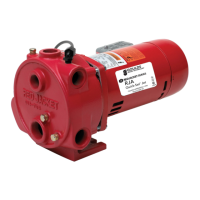
